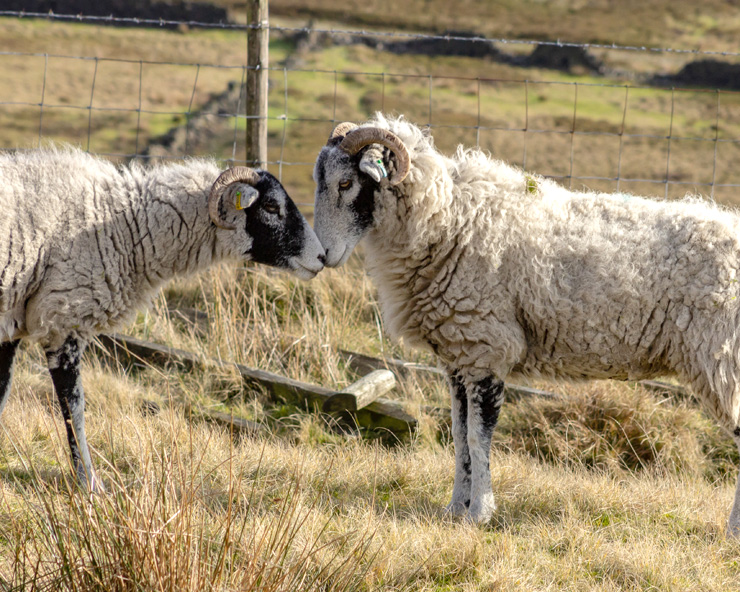No matter the size of your herd or flock, diseases can be spread by animals in contact with each other and with you.
How are diseases spread through direct contact?
For a disease to be spread through direct contact, there must be a disease agent in the environment on an infected animal. Animals become exposed to diseases when the agent comes into contact with an open wound, mucous membranes, or the skin through blood, saliva, nose-to-nose contact, rubbing, or biting. Direct contact exposure can occur between animals of different species and humans, depending on the disease.
Direct contact also includes disease spread during reproduction. Diseases can be spread during breeding, from mother to offspring during pregnancy, birth, and when nursing. They can also be spread to humans when assisting with animal births. Contact with tissues like placentas contaminated with brucellosis or Q fever can spread disease.
What diseases are spread by direct contact?
Direct contact can bring risks to both livestock and humans. Common diseases spread between animals by direct contact include bovine viral diarrhea (BVD), Infectious bovine rhinotracheitis (IBR), and mastitis. Other serious diseases include foot and mouth disease, avian influenza, and African swine fever, which can also be spread by direct contact.
Because direct contact can cause disease spread to humans as well, you should take care to protect yourself. Some diseases spread by direct contact that are a risk to people include rabies, leptospirosis, ringworm, and Q Fever.
How can I protect my herd from diseases spread by direct contact?
There are various things you can do to protect your herd.
- Quarantine new or returning animals before allowing contact with other animals in your herd/flock.
- When animals are sick, isolate them from healthy animals to reduce contact and exposure.
- Limit contact between animals of different ages and species is also good. Younger animals can generally get diseases easier than older animals.
- Always have enough space for animals to eat, drink water, and find shelter/shade. Providing space can reduce direct contact between healthy animals and those with a disease. Providing enough space also means your pastures and pens are not overcrowded.
- It is important to clean pastures/pens frequently to prevent waste buildup.
- Another way to protect your farm is to prevent fence line contact between your animals and neighboring livestock and put measures in place to reduce contact between wildlife and your flock/herd.
How can I prevent transmission through reproduction?
Diseases can spread by direct contact between dams and offspring.
- Ensure that animal births occur on clean, dry bedding or pasture. Dirty bedding should be removed, and clean bedding should be added between animals.
- During birth, disease-causing organisms can be shed into the environment. Deeply bed birthing pens with absorbent material (e.g., straw, sand, wood shavings, or paper) drain fluids (e.g., manure, urine) away from the newborn animal and limit contact.
- When possible, clean dirty udders before birth. Always provide a dry place for animals to lie down so udders or teats do not become covered with mud or feces. This will reduce the risk of mastitis and disease exposure for the newborn animal.
- Know the health of your animals before they are inseminated or give birth to protect their offspring.
How can I protect myself from diseases spread by direct contact?
- Make sure to wash your hands after contact with animals.
- Wear protective clothing—such as gloves or palpation sleeves – when touching wounds, body fluids, or assisting with reproduction events.
- Wash your hands after removing gloves or other protective clothing (e.g., gloves, masks, boots, coveralls).
- It is also important to reduce the number of people around sick animals and the time you are spending around your sick animals.
- If you have concerns about being sick, contact your physician.
More Resources:
CDC – Diseases spread by direct contact
South Dakota State – Safety for fairs and petting zoos
The Center for Food Security and Public Health – Direct contact control

